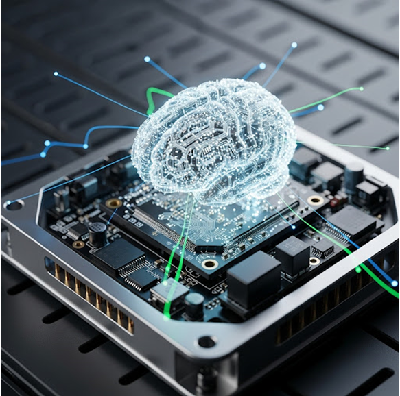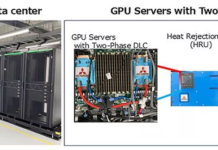Market Summary:
According to our latest research, the global AI in Embedded Systems market size reached USD 10.7 billion in 2024, reflecting robust demand across multiple industries. The market is expected to expand at a CAGR of 17.2% from 2025 to 2033, with the total market value projected to attain USD 36.8 billion by 2033. This impressive growth trajectory is being driven by the rapid integration of artificial intelligence with embedded devices, enabling real-time data processing, automation, and intelligent decision-making across a spectrum of applications.
Artificial Intelligence (AI) is no longer confined to massive servers and cloud-based systems. Today, AI is finding its way into embedded systems — small, resource-efficient devices that power everyday gadgets and industrial machines. This transformation is redefining how devices interact with users, process information, and make intelligent decisions.
What Are Embedded Systems?
An embedded system is a combination of hardware and software designed to perform specific tasks. They are found in a wide range of applications, from home appliances and medical equipment to industrial controllers and automotive electronics. Traditionally, embedded systems operated on pre-programmed logic with limited adaptability.
However, the integration of AI is giving these systems the ability to learn, adapt, and respond intelligently to changing conditions.
Why AI and Embedded Systems Are a Perfect Match
1. Real-Time Decision Making
Embedded systems with AI can process data locally and make decisions instantly without waiting for cloud-based computations. This is crucial for applications like autonomous vehicles and industrial automation, where milliseconds can make a difference.
2. Reduced Dependency on Cloud
By processing data at the edge, AI-powered embedded systems reduce the need for constant cloud communication, lowering latency and enhancing data privacy.
3. Enhanced User Experience
From voice assistants in home devices to intelligent control in wearable fitness trackers, AI makes embedded systems more intuitive and responsive.
Applications of AI in Embedded Systems
1. Autonomous Vehicles
Embedded AI systems handle real-time sensor data to assist in navigation, obstacle detection, and safety alerts.
2. Healthcare Devices
Smart wearables and diagnostic tools analyze patient data instantly, offering continuous monitoring and early detection of health issues.
3. Smart Home Appliances
AI enables appliances like washing machines, refrigerators, and air conditioners to optimize operations based on usage patterns.
4. Industrial IoT (IIoT)
Factories use AI-driven embedded systems for predictive maintenance, quality control, and energy optimization.
Challenges in AI-Embedded Integration
1. Limited Hardware Resources
Unlike powerful cloud servers, embedded devices have constrained memory, storage, and processing capabilities.
2. Power Consumption
Running AI algorithms can drain power quickly, especially in battery-operated devices.
3. Model Optimization
AI models must be optimized to run efficiently without compromising performance.
Technologies Driving AI in Embedded Systems
1. TinyML
Tiny Machine Learning enables AI models to run on microcontrollers and low-power chips, making AI practical for even the smallest devices.
2. Edge AI Processors
Specialized chips like NPUs (Neural Processing Units) and TPUs (Tensor Processing Units) are designed to accelerate AI tasks in embedded devices.
3. Lightweight AI Frameworks
Frameworks such as TensorFlow Lite and PyTorch Mobile allow developers to deploy AI models in resource-limited environments.
The Future of AI in Embedded Systems
As AI algorithms become more efficient and hardware continues to advance, embedded systems will become even smarter, more energy-efficient, and more autonomous. We can expect future innovations like:
- AI-powered drones for environmental monitoring
- Self-learning industrial robots
- Advanced personal health assistants in wearables
- Ultra-smart home devices that adapt in real-time to user needs
Conclusion
The integration of AI in embedded systems is transforming everyday devices into intelligent, adaptive tools that can enhance efficiency, safety, and user experience. As hardware limitations are overcome and AI algorithms become leaner, the potential applications will continue to grow — leading us into an era where intelligence is embedded in everything around us.
Source:https://researchintelo.com/report/ai-in-embedded-systems-market

















